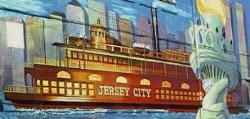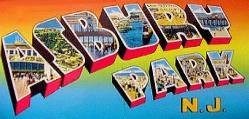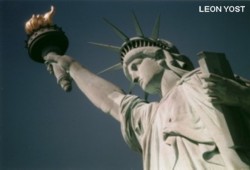 |  |  |
|
| ||
 |  |  |
 |  |  |
|
| ||
 |  |  |
|
|
On July 12th, 1776, the batteries, of the new fort opened fire on the British men of war, the Phenix of forty guns and the Rose of twenty guns, as they came up the Bay to New York. The fire was returned with broadsides as they passed. That same evening Lord Howe sailed up the harbor to New York. Troops were stationed at Paulus Hoeck and Bergen ready to reinforce Washington. After the battle of Long Island these orders were countermanded and the troops were stationed at Paulus Hoeck and Bergen Neck. On the 15th of September, the British captured New York City and again the Paulus Hoeck troops had a little skirmish with the enemy. Occasionally Washington came over from his camp at Harlem to reconnoiter along the Jersey shore as far as Paulus Hoeck. Recognizing that the fort could not be held, preparations were made for its evacuation. General Mercer removed all guns, stores and troops with the exception of a small guard under orders to leave upon the first appearance of the enemy. On the afternoon of September 23d, 1776, the, English ships cannonaded the fort for half an hour or more, then landed a force. About twenty boats also came over from New York. They found nothing but a few guns unfit for use. General Mercer and his troops retired to Bergen with an outpost at Prior's Mill. October 5th, the American troops, left Bergen to join Washington in his retreat to the Delaware.
For a long time Paulus Hoeck was the only British stronghold in New Jersey. They greatly strengthened the defences built by the Americans and made their landings at this point. At high tide boats could pass over the marsh and even over the causeway that connected Paulus Hoeck with the main land. An elevated foot path or board walk. had been made parallel to the road to enable people to pass at all stages of the tide. This was still in use well into this century.
I quote Mr. Winfield's description of the fort: "It was a very strong position with the waters of the river and coves on the north, cast and south, and on the west a marsh, with a creek running near the westerly edge of the upland from near Montgomery street southwesterly- into the southerly cove near the foot of Van Vorst street. This creek had been connected with the Harsimus cove by a ditch about on the line of Warren street. Over this ditch on the line of Newark avenue was a drawbridge with a barred gate. Thirty paces inside of the ditch and the creek was a row of abattis extending into the river. The main works were in the line of Sussex street extending from about St. Mathews Church easterly to Greene street. The barracks were at the intersection of Essex and Warren streets. From the main fort a redoubt extended southerly along Washington street to a half moon fort on the southerly side of Essex street. There was one fort on the north west corner of Grand and Washington streets. Some block-houses had been constructed north of the main works, and one of them north of the road leading to the ferry. The burying ground was on the west of Washington street, extending from Sussex to a short distance south of Morris street."
|
|
|
|
 Your Ancestors' Story |
 Bruce Springsteen's Jersey Shore Rock Haven! |

|
UrbanTimes.com |